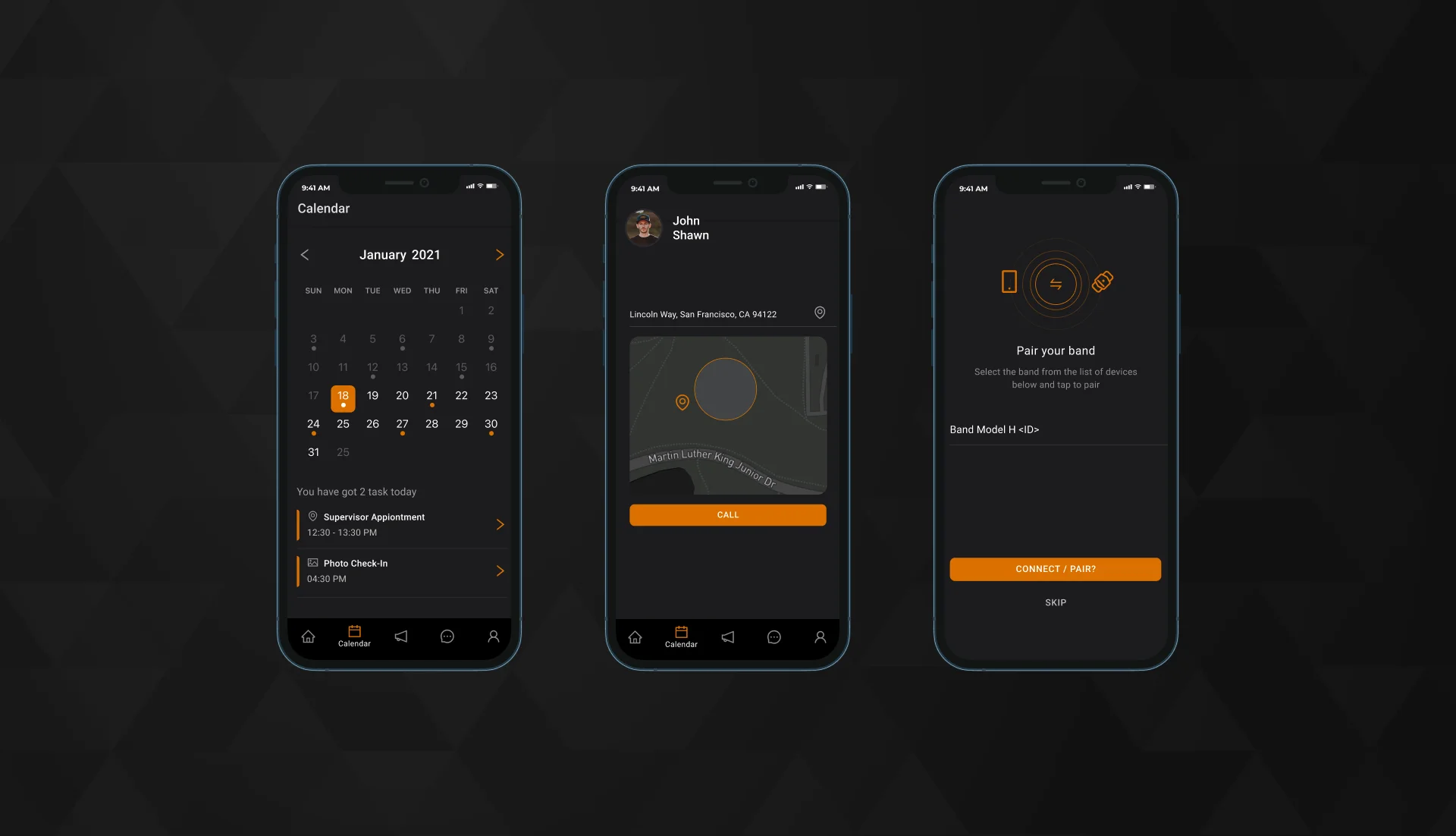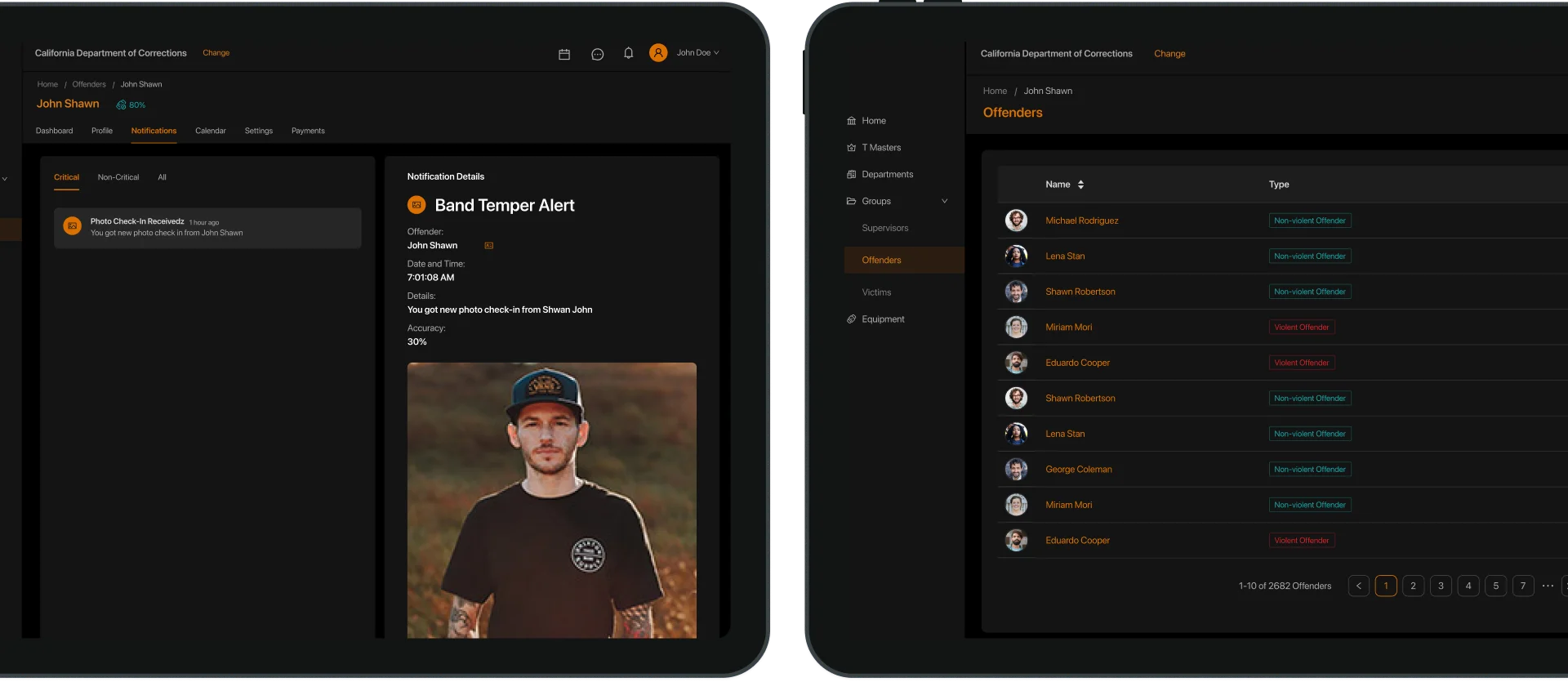Offender Tracking System – An AI-supported IoT Application for Public Safety
About the Client
A confidentiality agreement covers the following case study. Therefore, we do not provide the company name. However, both the client’s needs and the solutions we applied are so universal that we described them here. The mixture of vast experience and the vision and unconventional ideas of the funders create the incredible potential to revolutionize the public safety industry using the latest technologies and IoT.

Personal unit tracking system challenges
The project’s mission was to modernize the prison industry and eliminate the technical debt, which is its most pressing problem. The technology enables a significant reduction in costs and facilitates the work of supervisors through automation and reducing the number of duties.
Moreover, the system must be ready to detect extreme cases, i.e., situations in which the health or life of the monitored entity is endangered. For example, with physical injuries or a prisoner’s suicide attempt, the system should alert the supervisor and reduce the time needed to react.
It was quite a challenge to develop the entire system with synchronization between the web portal, native mobile applications, and hardware in the form of tracking bands. In addition to creating the main functionality of the system, live tracking requires precise monitoring of units in designated zones. It was difficult to define the exact areas to be monitored, such as the home and yard or the workplace, and the ability to set the time and the commuting route. Some cases also required setting exclusion zones, e.g., a ban on approaching a liquor store for a person who committed an offense under the influence of alcohol or a ban on approaching school and kindergarten for a person convicted of pedophilia.
Custom hardware was the primary source of the location tracking data. We had to assume that the device battery could drop to a deficient level. In this case, the mobile phone with our app should be responsible for reporting the offender’s location. Location tracking in the native Android application is difficult due to the natively implemented optimizations required by Android. We had to work around this problem with dedicated silent push notifications, and different approaches to OS-native battery optimization.
A separate challenge in this type of project is the volume of data. Real-time tracking generates a high load on the system. To ensure high performance, we used time-series databases and AWS solutions dedicated to IoT.

How we’ve built the personal unit tracking system
We provided web development, native mobile development for both iOS and Android, a complex design for web apps and mobile applications, back-end development using AWS Python native solutions, and front-end development for creating a multi-tenant administration panel.
In line with the primary goal and vision of the project, we focused on creating a personal unit tracking system and managing offender profiles. The system has an insight into the history of the sentence and, thanks to its automation, monitors compliance with the sentence. Ultimately, with the help of artificial intelligence, the system will be able to propose a change in the sentence or the manner of serving based on the previous behavior of the offender.
As part of the personal unit tracking system, we created a dedicated application for tracked people, equipped with the live tracking function. In addition to monitoring the location of prisoners, the application allows them to check in by adding a photo or video, answering an incoming call from the supervisor, or reporting a problem and sending a confirmation that they are not breaking the rules. The supervisor uses the same options but may additionally ask for a check-in.
What’s more, the app has a built-in chat for communication between the offender and the supervisor and a dashboard presenting all the statistics on serving a sentence and areas for improvement indicated by the system.
An extensive calendar of events is a tool that makes the enforcement of a penalty clear to both parties. It presents all check-in events planned for upcoming days and sends reminders by the push notifications system. In addition, artificial intelligence verifies all kinds of attachments sent by users in the check-in process, and the supervisor can add comments and notes.
Advanced push notification systems and the addition of AI provide a detailed guide for an offender on how to properly serve a sentence and increase the chances of a sentence reduction. The system sets up KPIs and seeing that the offender complies with the requirements and causes no problems may ease the conditions of serving a sentence. On the other hand, any violations can make their situations worse.
Along with native mobile applications, we designed and developed a web platform for supervisors and system administrators. It has the same features as mobile apps but additionally serves as a database for managing offender profiles, equipment management, and even battery consumption levels in smart devices. On the web platform, supervisors access all offenders-related documentation, and thanks to the advanced map view and AWS IoT integration, they can configure restricted zones.

Results
We created the MVP version of the system in a web platform and native mobile applications in just two months. Later on, we added custom functionalities to the system and optimized performance. Thanks to the introduction of artificial intelligence and process automation, it was possible to significantly reduce the number of supervisors’ daily duties. The created system will realistically relieve the prison industry and reduce operational costs, offering a better insight into data, process automation, and an intensive notifications system to make offender departments’ lives more manageable.
